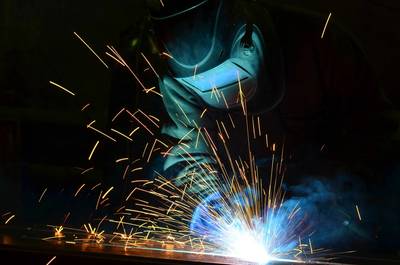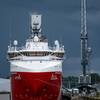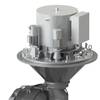US Shipbuilding: Policy and Progress
When asked about the top issues facing shipbuilders, executives at the Shipbuilders Council of America (SCA) listed a number of topics and concerns. SCA is the only national trade association representing U.S. shipyards engaged in the building and repairing of military and other government and commercial vessels, and companies providing goods and services to the shipbuilding industry.
Shutdowns have consequences
Matthew Paxton and Paula Zorensky are, respectively, SCA President and Vice President. Their top federal concern at the end of September? A U.S. government shutdown.
Paxton and Zorensky said that even a brief shutdown would impact budgets, safety, agency oversight and, of course, construction schedules. And the longer it lasted, the worse it gets. “We want to get into the next fiscal year,” Paxton commented, “to retain the strong momentum that underlies vessel construction programs.”
Fortunately, events moved in the right direction when, at the last minute on September 30, Congress passed HB 5860, a continuing resolution (CR) to extend current FY23 funding. But this just kicked the can down the road since the CR only provides funding through November 17, when hopefully a final budget bill will be approved. If not, it’s déjà vu all over again.
(The federal fiscal year runs from October 1 to September 30. Last minute budget dramas can make it easy to forget that the process starts on the first Monday in February. By November 17 it will be just a little over two months before Congress starts work on FY25 spending.)
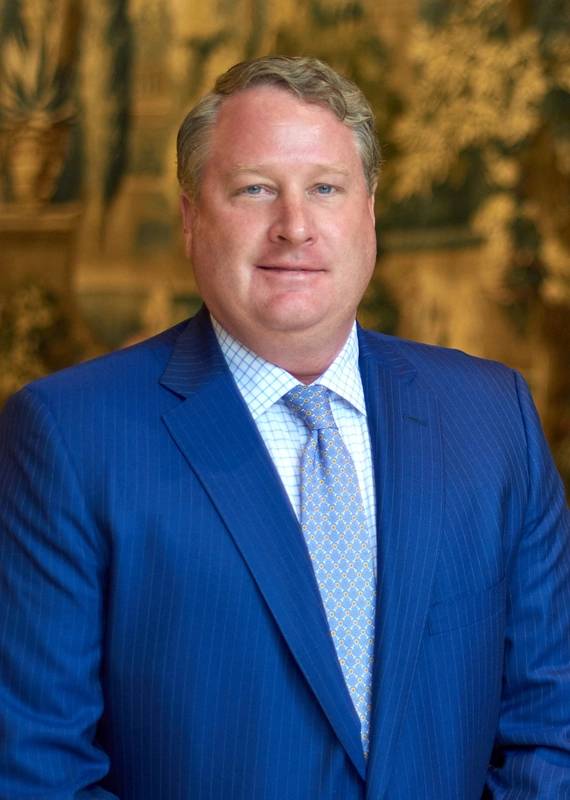 “We want to get into the next fiscal year, to retain the strong momentum that underlies vessel construction programs.” – Matthew Paxton, President, Shipbuilders Council of America (Photo: SCA)
“We want to get into the next fiscal year, to retain the strong momentum that underlies vessel construction programs.” – Matthew Paxton, President, Shipbuilders Council of America (Photo: SCA)
The Jones Act and clarity
For SCA members, Jones Act rulings form another set of top issues. Clear policies are critical, particularly decisions from Customs and Border Protection (CBP). Offshore wind projects will require hundreds of new American built vessels but multimillion dollar investments won’t happen if operating policies are murky.
As an example, Paxton and Zorensky cited a CBP ruling linked to the installation of wind tower monopiles (steel tubes driven into the seabed, forming a foundation for additional construction). In July, CBP was asked whether it was a Jones Act violation if a non-coastwise-qualified installation vessel worked, unanchored, to install monopiles at a pristine seabed site in U.S. waters.
In August, CBP replied: No - “The transportation of monopile foundations from a U.S. coastwise point to a pristine seabed site on the OCS by a non-coastwise-qualified vessel would not violate the Jones Act.”
That was challenged, not just by SCA but by a broader coalition, the American Maritime Partnership (AMP). Consequently, in September, in a letter to Jennifer Carpenter, President & CEO of the American Waterways Operators (AWO) and a member of AMP’s Board of Directors, CBP wrote that, upon review, it “modified” its ruling. AMP had raised an issue that wasn’t addressed by CBP, i.e., whether it was a Jones Act violation if (1) a vessel anchored itself to the pristine seabed because of severe, inclement weather and (2) the anchored vessel engaged in work at that point.
CBP’s September letter revised its earlier conclusion (or “holding,” to use CBP’s parlance). In the AMP letter CBP writes:
“Anchoring of the installation vessel to the seabed to aid its installation activity, even if due to inclement weather, would result in a violation of the Jones Act. Here, the installation vessel would be attached to the OCS via the anchor for the purposes of exploring for, developing, or producing resources, including non-mineral energy resources. Therefore, such anchoring would establish the installation vessel as a coastwise point while the attachment exists and result in a violation of the Jones Act once the monopiles are unladen at the vessel.”
CBP writes that “upon review, we have modified HQ H328718 (the document reference number) in part to clarify its holdings.” That’s a change just within two months, a policy vacillation with real impacts on markets and investments.
“We don’t need everything to be in the weeds,” Zorensky commented, “but consistent and predictable rulings are important for finance and for American shipbuilders.”
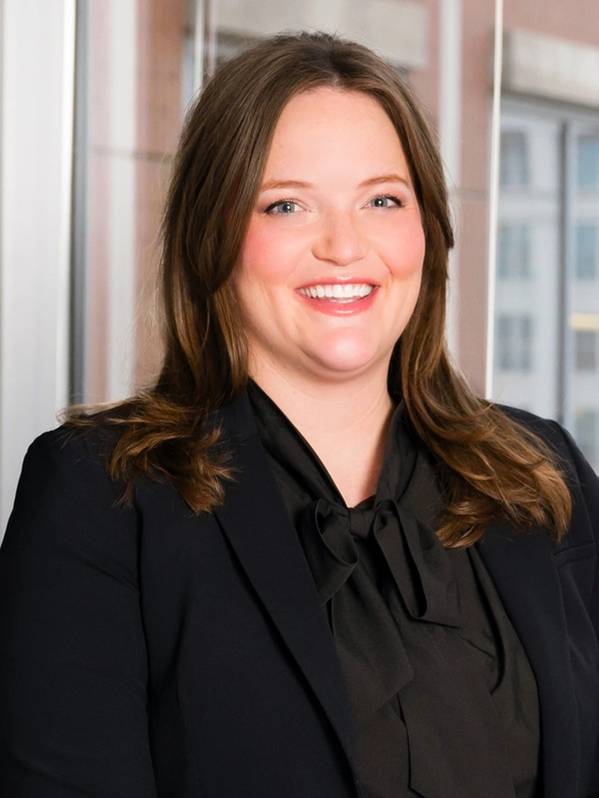 "Consistent and predictable rulings are important for finance and for American shipbuilders." – Paula Zorensky, VP, Shipbuilders Council of America (Photo: SCA)
"Consistent and predictable rulings are important for finance and for American shipbuilders." – Paula Zorensky, VP, Shipbuilders Council of America (Photo: SCA)
Domestic/foreign parity in employment
Another top concern, and one still at play in Congress, is legislation impacting U.S. workers on new offshore energy projects. This effort was initiated by Sen. Bill Cassidy (R-La.) in February 2022 when he introduced the “American Offshore Worker Fairness Act (AOWFA).” Cassidy said the bill “provides a level playing field between U.S. flagged vessels and foreign-flagged vessels working in offshore energy activities in U.S. waters.”
More than 100 maritime companies and organizations, including SCA’s Matthew Paxton, signed a letter endorsing AOWFA. The letter provides insights into US business’ concerns. It notes that all vessels, rigs, platforms, or other structures on the U.S. Outer Continental Shelf (OCS) are to be staffed by U.S. citizens or lawful permanent residents. However, there is an exemption for foreign owned vessels in order to be fair when American mariners are hired for foreign offshore projects.
But this fair play allowance needs review, the maritime organizations wrote to Sen. Cassidy. They explain:
“In practice, the exemption has not provided reciprocal access to foreign waters for U.S. mariners or companies but has allowed foreign vessels owned by foreign companies headquartered in some of the wealthiest countries to utilize mariners from low-wage nations. When employed in our waters, these mariners are not paid U.S. wages, but wages reflecting the rates paid in the international market.”
Cassidy’s bill is now part of HR 2741, the Coast Guard Authorization Act of 2023. In a background document SCA writes that AOWFA “is likely to result in more domestic shipbuilding for the U.S. offshore wind market.” By closing domestic-foreign employment loopholes, SCA writes that “companies who wish to operate in the American offshore wind market will be compelled to make investments in U.S.-built vessels.”
‘Vessel Construction Manager (VCM)’
When asked about new industry trends and developments Paxton and Zorensky quickly referenced delivery, in September, of Philly Shipyard’s Empire State, the new purpose-built training vessel for the SUNY Maritime College, the first of a number of such vessels to be built U.S.’s state maritime academies over the next few years.
Paxton and Zorensky’s reference wasn’t just to the ship, although the vessel itself and its dual capabilities for training and humanitarian missions surely deserves attention. Rather, their comments focused on a new business model. More specifically, a Vessel Construction Manager (VCM) contract model, a programmatic requirement set by Congress in the 2017 National Defense Authorization Act, directing MARAD to “provide for an entity other than the Maritime Administration to contract for the construction of the NSMV” (i.e., the National Security Multi-Mission Vessel, a broader descriptor for the new training ships.
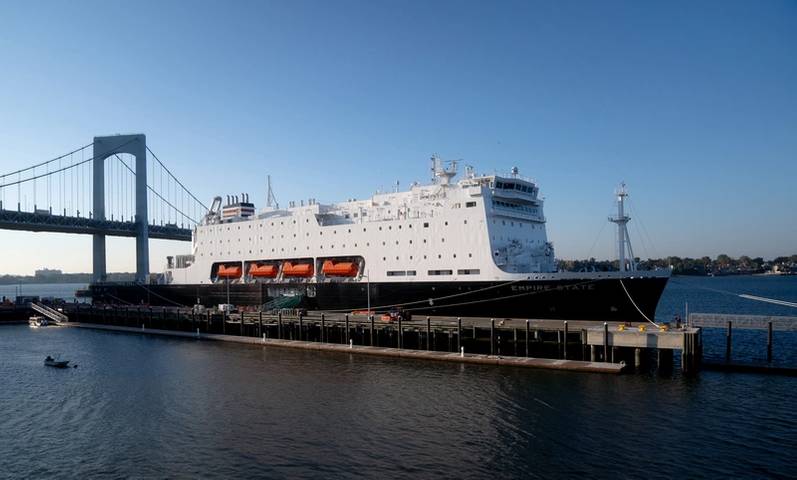 Empire State is the first of five new ships being built by Philly Shipyard under MARAD’s NSMV program. The vessels will be used to train cadets at the country’s state maritime academies. (Photo: MARAD)
Empire State is the first of five new ships being built by Philly Shipyard under MARAD’s NSMV program. The vessels will be used to train cadets at the country’s state maritime academies. (Photo: MARAD)
The Empire State is the first vessel built within the VCM framework. Paxton and Zorensky commented emphatically: A success. Do it again. It was the VCM model that kept the NSMV on schedule and within budget, obviously significant attributes for shipbuilders, their customers and, in this case, U.S. taxpayers.
Readers may recognize a number of events aligning here. After Congress set the VCM demand MARAD announced in 2019 that it selected Tote Services, Inc., of Jacksonville, Fla., as NSMV Vessel Construction Manager. Tote’s charge was to oversee and manage detailed design, construction, testing and delivery.
Significantly TOTE Services was also tasked with issuing a request-for-proposals to shipyards. In April 2020, TOTE Services awarded Philly Shipyard a contract to construct up to five NSMVs. Keel laying for the Empire State was in May 2021.
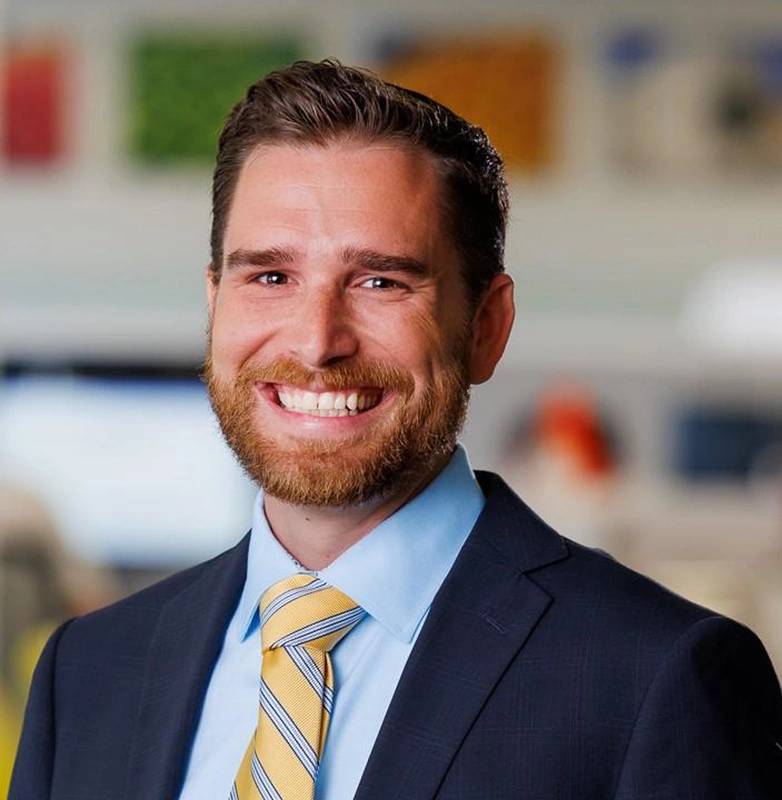 “It took some time to get [the VCM process] right, but the demand for success was important. All parties stayed in their lanes. This was make or break for industry.” – Ben Christian, VP for Business Development and New Construction, TOTE Services (Photo: TOTE)
“It took some time to get [the VCM process] right, but the demand for success was important. All parties stayed in their lanes. This was make or break for industry.” – Ben Christian, VP for Business Development and New Construction, TOTE Services (Photo: TOTE)
Ben Christian is TOTE Services’ VP for Business Development and New Construction. John Bond is Project Director and NSMV Program Manager for Philly Shipyard, Inc. The two were asked for their insights and advisories about the VCM process and the Empire State project.
The Empire State required a new kind of commitment from the contract manager, the shipyard and MARAD, Christian said. “It took some time to get this right,” he added, “but the demand for success was important. All parties stayed in their lanes. This was make or break for industry.”
Both men commented that MARAD was not a distant partner, it stayed engaged. “They were good at making sure we were doing what we said,” Bond said. But once a decision was made, it was respected by all. They noted that MARAD’s project team was smaller than for past, similar government projects. Real world impact: fewer bosses for TOTE Services and Philly Shipyard.
Bond commented that the VCM model “helped us build vessels. That’s what we do best.” The VCM established an arms-length status among the parties, avoiding multiple layers of reviews, reporting and related bureaucracy.
As an example, Bond referenced the need to get design work done quickly. “We didn’t want to redo any work,” he commented. VCM allowed a faster process, one similar to private sector, commercial pacing, not traditional government timetables. “We wanted to minimize change,” Christian said, “and we spent the time up front getting the design right.”
Another example: the VCM avoided double sea trials – one undertaken by the shipyard and then another ordered by the government, a duplication with significant cost impacts, a duplication that could have happened “out of habit,” Christian commented. He called the Empire State’s integrated sea trial “groundbreaking.”
Christian and Bond both hope that NSMV’s success will lead to more VCM style contracts, and more ships being built to address U.S. maritime needs.
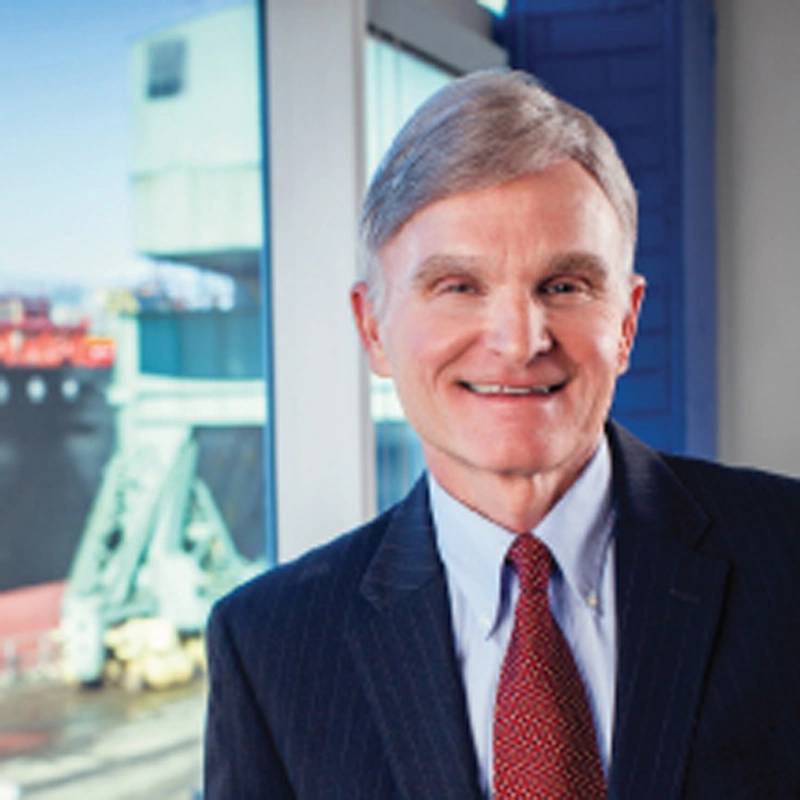 “[The VCM model] helped us build vessels. That’s what we do best.” – John Bond, Project Director and NSMV Program Manager, Philly Shipyard, Inc. (Photo: Philly Shipyard)
“[The VCM model] helped us build vessels. That’s what we do best.” – John Bond, Project Director and NSMV Program Manager, Philly Shipyard, Inc. (Photo: Philly Shipyard)
MARAD’s viewpoint
Laila Linares is MARAD’s NSMV Senior Program Manager. She was asked about the VCM model and the important milestone with the delivery of the Empire State. In response to emailed questions, she provided extensive insights into the VCM model as well as her thoughts on lessons applicable to future projects.
Linares said that the VCM model saved the government hundreds of millions of dollars and several years in construction time. One critical reason was MARAD’s extensive upfront work on vessel design, a focus that allowed TOTE Services and Philly Shipyard to quickly move to production.
She explained that MARAD used a “firm, fixed-price” contract, typical, she said, for commercial markets, one that reduced risk of cost overruns and delays. Another move was development of a single shipyard Indefinite Delivery/Indefinite Quantity (IDIQ) award, an approach that further protected the Government’s contractual interests. MARAD wants five training vessels, but it doesn’t have full funding available right now. The IDIQ capitalized on economies of scale not available with multiple shipyards.
“The IDIQ approach,” Linares explained, “provided the right flexibility to support the initial funding/construction of the first two vessels and then later for the remaining vessels to complete the NSMV State-Class. By working with a single shipyard as opposed to multiple shipyards, we have been able to achieve greater efficiency and cost savings through configuration control, with vessels of an identical design and equipment.”
 “Through the VCM model, we’ve learned a lot about U.S. shipbuilding capabilities and gaps.” – Laila Linares, NSMV Senior Program Manager, MARAD (Photo: MARAD) Linares called the NSMV program “a new chapter in federal shipbuilding, a historic new commitment to maritime education, shipbuilding best practices, and the U.S. maritime industry.” She said the government benefited from the ability to leverage commercial entities’ acquisition processes to maximize competition and experience. The VCM model, she added “created a highly competitive and streamlined approach that can be used in the future by other government entities to procure ships.”
“Through the VCM model, we’ve learned a lot about U.S. shipbuilding capabilities and gaps.” – Laila Linares, NSMV Senior Program Manager, MARAD (Photo: MARAD) Linares called the NSMV program “a new chapter in federal shipbuilding, a historic new commitment to maritime education, shipbuilding best practices, and the U.S. maritime industry.” She said the government benefited from the ability to leverage commercial entities’ acquisition processes to maximize competition and experience. The VCM model, she added “created a highly competitive and streamlined approach that can be used in the future by other government entities to procure ships.”
Indeed, Linares said the government has a unique opportunity to review and ask, “What worked well, what didn’t work so well and what are some ways that the VCM model can be strengthened even further?”
She said there is already a shift in the federal shipbuilding sector because of this initial VCM success. She called this “a bold step” that minimized risk because of a solid design and sticking to that design – “meaning,” she said, “don’t change design requirements during construction” – and setting delivery and budget expectations. She added, “I think that there will be parts of government shipbuilding that will struggle with ‘letting go’ a little, but we stand ready to share our experiences.”
Linares said that MARAD has received inquiries from other federal and state agencies about the VCM acquisition model. “This is a great time for us to share best practices,” she commented. More specifically, she noted that “Congress is interested in seeing us do it again” and she referenced building out the Ready Reserve Force or RRF vessels. This funding still needs to be cleared by the Office of Management and Budget, but when those projects are ready to move it’s likely they will advance within the VMC framework.
Linares was asked about lessons that might transfer to or otherwise impact private sector shipyards.
The VCM concept, she said, is “really nothing more than a commercial approach to shipbuilding that utilizes private sector shipyards to build as designed on schedule and at a fixed price.” This was championed by the maritime industry, she explained further, as the best model because “it improves the U.S. maritime industrial base, from steel to suppliers, ship managers to ship builders, and creates new jobs for the American workforce. Through the VCM model, we’ve learned a lot about U.S. shipbuilding capabilities and gaps.”
In closing, Linares said MARAD will work with the Department of Transportation and Congress to strengthen U.S. shipbuilding and related manufacturing. Additionally, she said that MARAD is looking at ways to increase U.S. ship repair capabilities and skilled labor through grant programs and helping vocational and technical training institutions. She’s hopeful that future MARAD shipbuilding projects like the NSMV will expand to additional shipyards.
“Nothing will support this critical industry more,” she wrote in a final comment, “than a steady, predictable, long-term demand for commercial shipbuilding and repair capabilities.”




